#louis agassiz fuertes
Text
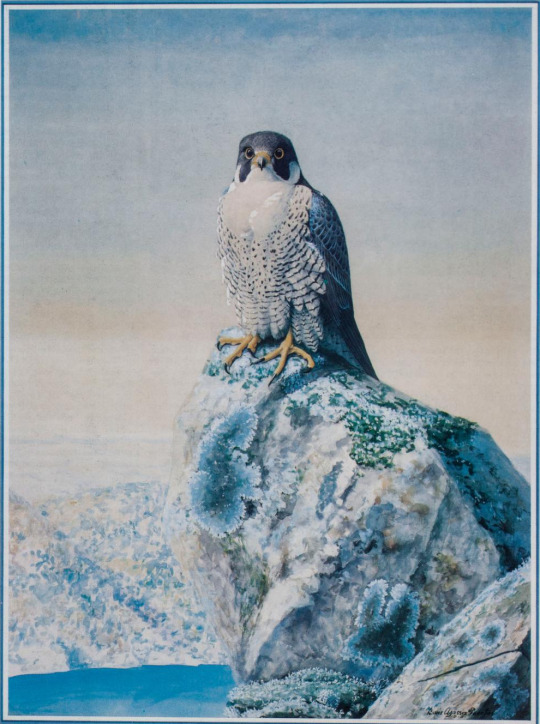
Peregrine falcon (Falco peregrinus) by Louis Agassiz Fuertes. From Terra: The Member's Magazine of The Natural History Museum of Los Angeles County. Volume 22, No. 6. July/August 1984.
Internet Archive
367 notes
·
View notes
Text
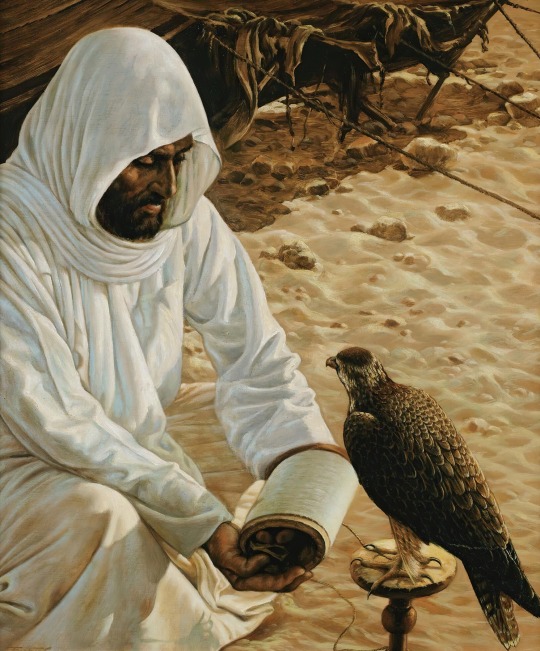
Louis Agassiz Fuertes (American, 1874–1927), "The Falconer", 1881
#Louis Agassiz Fuertes#art#american art#painting#animals in art#bird#birds#bird painting#birds in art#falcon#oil on panel#oil painting#figurative#figurative art#figurative painting#paintings#19th century art#19th century#1880s
71 notes
·
View notes
Text

Screech Owl (1902) by Louis Agassiz Fuertes.
New York Fish and Game Commission.
University of Washington
Wikimedia.
77 notes
·
View notes
Text



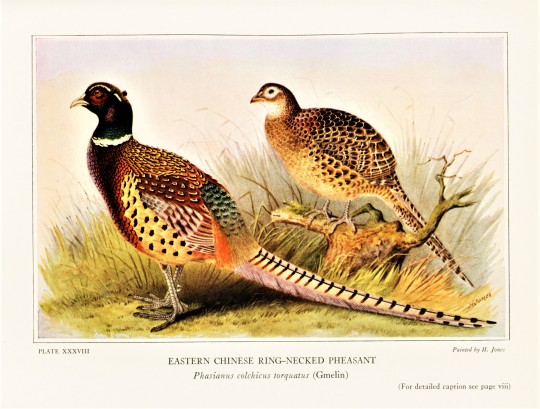

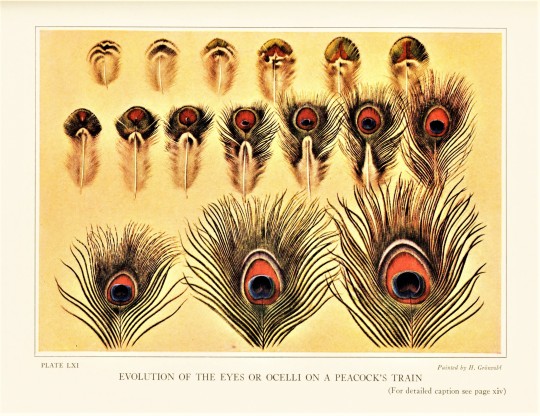



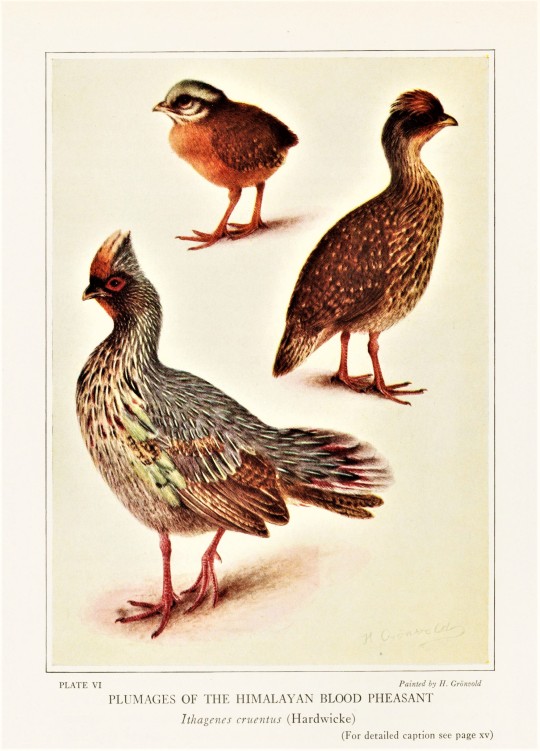
Feathursday Pheasants!
This week we bring you a few Pheasants from around the world as published in the 1936 publication Pheasants Their Lives and Homes by the eminent zoologist and explorer William Beebe, published in Garden City, N.Y. by Doubleday, Duran & Company under the auspices of the New York Zoological Society, where Beebe was director of the Department of Tropical Research.
In 1910, Beebe led a major, 17-month, worldwide expedition for the New York Zoological Society to document the world's pheasants. "The urgency of this journey sprang from the fact that the members of this most beautiful and remarkable group of birds are rapidly becoming extinct, so that the record of their habits and surroundings, which is important to understanding their structure and evolution, will soon be lost forever."
The resulting publication was the 4-volume A Monograph of the Pheasants, published in London by H. F. Witherby for the New York Zoological Society, 1918-1922. The abridged version, Pheasants Their Lives and Homes, first came out in 1926. This is the 1936 edition. The images shown here are by naturalist artists Louis Agassiz Fuertes, Henrik Grønvold, Henry Jones, Charles R. Knight, and George Edward Lodge.
View more posts with pheasants.
View more Feathursday posts.
#feathursday#pheasants#Pheasants Their Lives and Homes#William Beebe#Doubleday#Duran & Company#New York Zoological Society#bird paintings#scientific illustrations#Louis Agassiz Fuertes#Henrik Grønvold#Henry Jones#Charles R. Knight#George Edward Lodge#wildlife artists#birds#birbs!
125 notes
·
View notes
Text
More for #LoveHornbillsDay:

"Crested Hornbill" now known as the Silvery-Cheeked Hornbill (Bycanistes brevis)
painted in 1926 by Louis Agassiz Fuertes (1874-1927), reproduced in Album of Abyssinian Birds and Mammals (1930) by the Field Museum. Via BHL.
#animals in art#animal holiday#20th century art#birds in art#illustration#bird#birds#1920s#Louis Agassiz Fuertes#Field Museum#hornbill#Silvery-Cheeked Hornbill#ornithology#ornithological illustration#scientific illustration#natural history art#painting#lithograph#Album of Abyssinian Birds and Mammals#Love Hornbills Day#BHL#Biodiversity Heritage Library
17 notes
·
View notes
Text
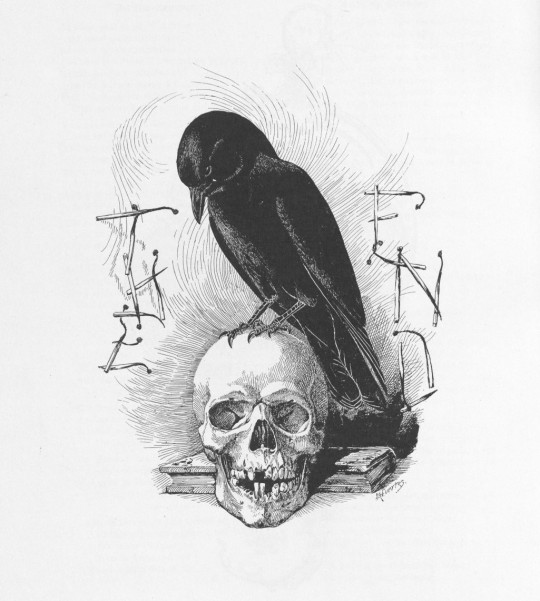
Louis Agassiz Fuertes - The Raven and Skulls. Final page in 'The Cornellian' (magazine) of 1896.
18 notes
·
View notes
Text

Bahama Duck, Galapagos Island Duck, African Red-Billed Duck (1922-1926) | Louis Agassiz Fuertes | A natural history of the ducks v.2
#louis agassiz fuertes#anas bahamensis#anatidae#ducks#duck art#bird art#vintage illustration#illustration
18 notes
·
View notes
Text
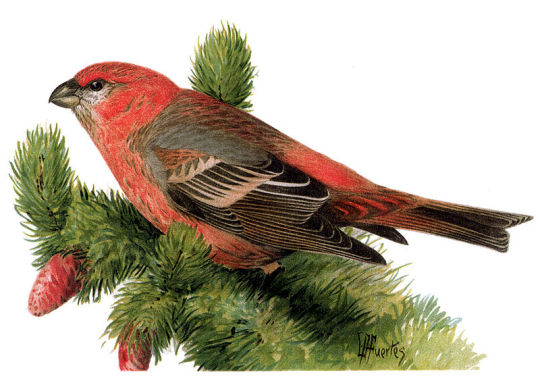
Pine Grosbeak. Fuertes. This is an early Fuertes and I think if you remember that at the time he would have painted it, presumably sometime within the first decade of so of the 20th century, there was really on artist doing realistic paintings of birds in North America, you can understand the support he quickly had from the ornithological community. And unlike Brooks, Fuertes was well positioned geographically, being located near Cornell University, and close to the epicentre of natural history science of that era. It’s a translucent watercolour, very “field-guide-ish” with neutral lighting and simplified environment.
art by louis agassiz fuertes
text by barry kent mackay
support barry kent mackay on ko-fi
22 notes
·
View notes
Photo
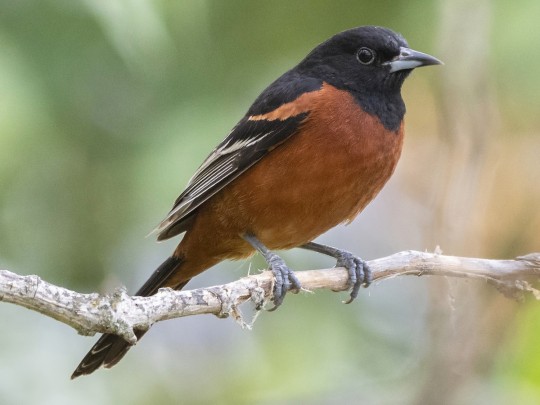



Hispanic Heritage Month: Louis Agassiz Fuertes
In a departure from our usual uncharismatic animals, and to mark the end of Hispanic Heritage Month in the US, I’d like to discuss a man easily comparable to Audubon: Louis Agassiz Fuertes.
Fuertes was born in New York to Puerto Rican parents in 1874. His father was an astronomer and civil engineer, and recognised his son’s talent and passion for birds at an early age; this revelation might have been aided by an incident involving young Fuertes tying a live owl to the kitchen table. Fuertes became an Associate Member of the American Ornithologists Union at age 17, and was mentored at Cornell University by Elliott Coues, the nation's leading ornithologist.
After graduating, Fuertes went on expeditions to document new species. These expeditions were led by a number of famous explorers, including artist Abbott H. Thayer, financier E. H. Harriman, and zoologist C. Hart Merriam. As he established himself as an ornithologist and illustrator in his own right, Fuertes continued to travel the world, covering much of North America and venturing to other countries like the Bahamas, Jamaica, Canada, Mexico, Colombia, and Ethiopia in pursuit of new species.
Between these travels Fuertes collaborated with the curator of American Museum of Natural History, Frank Chapman, to create field guides, dioramas, and book illustrations. Fuertes also discovered a species of oriole, known now as Fuertes's oriole or the orchard oriole (Icterus fuertesi). Beginning in 1923 Fuertes regularly lectured on ornithology at his alma mater, Cornell. He completed his last expidition in 1926-27, when he accompanied W. H. Osgood on the Chicago Field Museum’s trip to Ethiopia and produced some of his most famous works. Shortly after his return, Fuertes was killed in a train accident. He was 53 years old.
Fuertes’s legacy continues on in two species of bird: the Orchard Oriole and Fuertes's parrot (Hapalopsittaca fuertesi), which was rediscovered in 2002 after being thought to be extinct. To honor his adventurous spirit, the Boy Scouts of America made Fuertes an Honorary Scout after his death in 1927. The Wilson Ornithological Society established the Louis Agassiz Fuertes Award in 1947, and he has been credited with influencing other later wildlife artists.
If you like what I do, consider leaving a tip or buying me a ko-fi!
38 notes
·
View notes
Photo

A new variant has been added!
Wilson's Phalarope (Phalaropus tricolor)
© Louis Agassiz Fuertes
It hatches from black, broad, brown, common, crisp, dark, distinct, east, large, open, orange, other, pale, plain, rare, red, shallow, slender, small, thin, uncommon, western, white, and yellowish eggs.
squawkoverflow - the ultimate bird collecting game
🥚 hatch ❤️ collect 🤝 connect
3 notes
·
View notes
Text

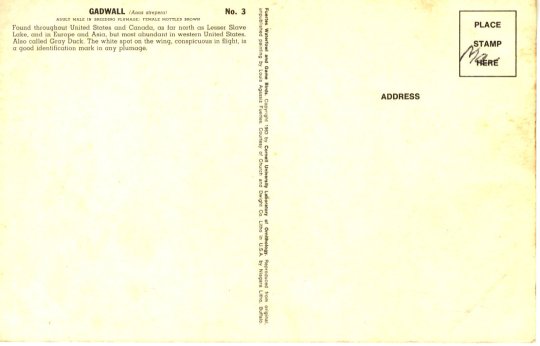
Gadwall
(Anas Strepera) Adult male in breeding plumage; female mottled brown
Found throughout United States and Canada, as far north as Lesser Slave Lake, and in Europe and Asia, but most abundant in western United States. Also called Gray Duck. The white spot on the wing, conspicuous in flight, is a good identification mark in any plumage.
No. 3 Fuertes Waterfowl and Game Birds. copyright 1963 by Cornell University Laboratory of Ornithology. Reproduced from original, unpublished painting by Louis Agassiz Fuertes. Courtesy of Church and Dwight Co. Litho in U.S.A. by Niagara Litho, Buffalo.
#postcard#postcardaday#ducks#gadwall#gray duck#Louis Agassiz Fuertes#lithograph#1960s#1963#midcentury#midcentury postcards
0 notes
Text

Album of Abyssian Birds and Mammals. From paintings by Louis Agassiz Fuertes. 1930.
263 notes
·
View notes
Text
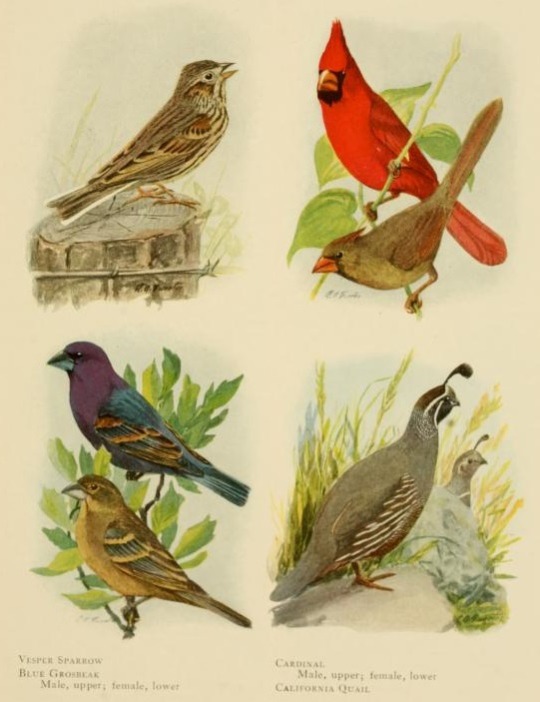
Illustrations of Vesper Sparrow, Cardinal, Blue Grosbeak and California Quail from The book of birds, common birds of town and country and American game birds (1918)
0 notes
Photo
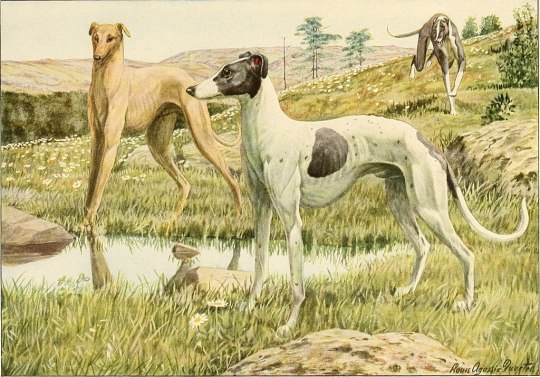
Illustration by Louis Agassiz Fuertes of greyhounds taken from ‘The Book of Dogs’ (1919).
The National Geographic Society.
Smithsonian Libraries.
Wikimedia.
47 notes
·
View notes
Photo
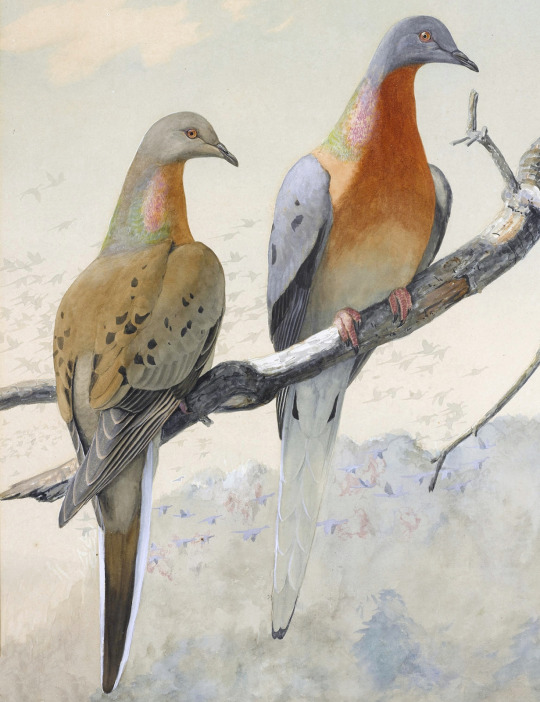
A pair of passenger pigeons - Louis Agassiz Fuertes - 1907 - via Bonham’s
2K notes
·
View notes
Text
For a fine feathered Friday:

Ruff Sketches, c. 1895
Louis Agassiz Fuertes (American, 1874-1927)
Watercolor on paper, 9 x 5.5 in.
Cornell Lab of Ornithology art collection BIRD_08203.028
#animals in art#birds in art#bird#birds#Ruff#watercolor painting#painting#illustration#ornithological illustration#Cornell Lab of Ornithology#Louis Agassiz Fuertes#19th century art#American art
8 notes
·
View notes